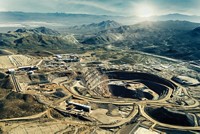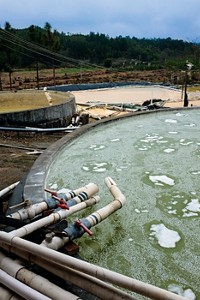Advertisement
Grab your lab coat. Let's get started
Welcome!
Welcome!
Create an account below to get 6 C&EN articles per month, receive newsletters and more - all free.
It seems this is your first time logging in online. Please enter the following information to continue.
As an ACS member you automatically get access to this site. All we need is few more details to create your reading experience.
Not you? Sign in with a different account.
Not you? Sign in with a different account.
ERROR 1
ERROR 1
ERROR 2
ERROR 2
ERROR 2
ERROR 2
ERROR 2
Password and Confirm password must match.
If you have an ACS member number, please enter it here so we can link this account to your membership. (optional)
ERROR 2
ACS values your privacy. By submitting your information, you are gaining access to C&EN and subscribing to our weekly newsletter. We use the information you provide to make your reading experience better, and we will never sell your data to third party members.
Business
Managing A Dearth Of Rare Earths
Chemical companies try various ways to adapt to rising prices and tight supplies
by Jean-François Tremblay
April 2, 2012
| A version of this story appeared in
Volume 90, Issue 14

As if Andy Warhol’s saying that everyone gets their 15 minutes of fame also applied to elements, rare earths have been in the news a lot lately. This family of obscure elements with far from household names is at the center of an international dispute over whether China, the world’s main producer, is unfairly discriminating against foreign buyers of rare earths by instituting export quotas.
While the trade dispute simmers, prices for many rare earths have doubled, tripled, or risen by even more over the past three years. In recent months, prices have retreated from the peak they reached last spring, but they still remain very high by historical standards. Chemical companies that require these metals to manufacture their products are still pursuing all available means to fight higher prices and short supplies. They have found there are only so many ways to address the problem—none completely satisfactory.
To improve their access to rare earths, some users have backed non-Chinese projects or relocated their operations to China to get around the export quotas. They have attempted to recover the rare earths found in used products. And they have looked for ways to reduce the rare-earth content of their products, even if this amount is already parsimonious.
Their attempts to surmount the shortages have not always succeeded, and sales have suffered. A spokesman for Shin-Etsu Chemical, a producer of rare-earth-containing magnets, tells C&EN that some customers are switching to other types of magnets in response to increases in the price of magnets made with rare earths. He expects the market for rare-earth magnets to shrink.
The rare-earth family contains 17 elements—the 15 lanthanides plus scandium and yttrium—with myriad applications and market dynamics. Neodymium and samarium, for example, are incorporated into alloys for magnets, where their high magnetic moment and stable alignment contribute to strength. Other uses include refinery catalysts, lasers, and luminophores for low-energy lightbulbs.

“Whether or not buyers of rare earths can replace them depends on the product they make,” says Judith Chegwidden, director of Roskill, a London-based consulting firm focused on metals and minerals. “So the ways buyers react to price rises depend on the materials they are buying.”
Although rare-earth elements are not particularly rare, they are hard to find in concentrations high enough to sustain a commercial operation. Moreover, it is difficult to extract and refine them in an environmentally benign manner. Extracting rare earths from ores can require harsh conditions and solvents. China, which produces more than 90% of all rare earths, says prices have risen because it has cracked down on illegal rare-earth mines and on polluting metal refiners.
This rationale for limiting supply gets some sympathy abroad. “There was some wild exploitation of rare earths that involved the indiscriminate use of various types of acids for the purpose of selling a few kilograms of rare earths on the sly,” says Lamia Narcisse, a spokeswoman for Rhodia, which produces rare-earth-based formulations for use in auto catalysts, luminophores, and polishing.
But others claim that Chinese export restrictions are aimed at persuading rare-earth users to build manufacturing facilities in China. Several foreign companies are indeed setting up plants in the country.
Most recently, Shin-Etsu said it will spend $18 million to build a plant in China’s Fujian province to make rare-earth-containing alloys used in magnets. The facility will open in January 2013. Ferro announced in February that it will form a joint venture with Baotou Jin Meng Rare Earth to produce cerium oxide-based polishing materials for liquid-crystal displays in China’s Inner Mongolia Autonomous Region.
Last December, Rhodia signed a supply agreement with China Rare Metals & Rare Earth under which the Chinese company will supply rare-earth ore to Rhodia in exchange for assistance in cracking the global market. The French company has operated two rare-earth processing plants in China for many years. Sourcing ore from China improves the security of Rhodia’s raw material supply, Narcisse says.
Not all companies are as willing to set up manufacturing operations in China. “There are phosphor companies and magnet companies that have moved there to make alloy, and they are quite successful. But a lot of processors don’t want to risk their intellectual property,” Chegwidden says.
One alternative to sourcing from China is to reduce consumption of rare earths or to avoid using them at all. Several chemical companies have attempted with mixed success to reduce their use of the minerals. Shin-Etsu, for example, says it discovered a manufacturing method for its magnets called grain boundary diffusion that uses less rare-earth material. The rare earths, however, remain essential to the performance of the product.
BASF has tried to develop new refining catalysts that require less of the rare earths or are free of them. But “rare-earth materials have been used as support components for the past 30 years and cannot be easily replaced,” a company official tells C&EN. BASF uses lanthanum in its refinery catalyst formulations and other rare earths—primarily cerium—in its vehicle emissions catalysts.
Another strategy is to develop suppliers in other countries. Several companies, including Rhodia and BASF, have signed supply agreements with Lynas, an Australian rare-earth supplier that is also setting up a refining facility in Malaysia.
Shin-Etsu is backing alternative sources of supply in India and Vietnam. Working with Toyota Tsusho, a trading affiliate of the Japanese auto company, Shin-Etsu is building a processing plant in Orissa, India, that is scheduled to start production of neodymium before the end of the year.
In Vietnam, Shin-Etsu is building a recycling plant that will reclaim rare earths from used magnets and from the sludge generated during production of new magnets. Shin-Etsu is also considering processing rare-earth ore extracted from Vietnamese mines and participating in the development of mines in other countries.
But it will be difficult to develop non-Chinese sources, Chegwidden warns. For instance, some of the unrefined rare earths available in Vietnam are actually smuggled in from China, she believes.
A more general problem with investing in alternative production locations is the difficulty of making a financial return. The entire rare-earth market is a respectable $3 billion to $4 billion annually, Chegwidden says, but this total includes all 17 of the rare earths, whose market sizes vary. One reason why China dominates the industry today is that mines elsewhere in the world closed in years past because of low prices for rare earths.

And developing new mines containing uncharacterized ores is a challenge. “It has taken Lynas 20 years to get where it is at today,” Chegwidden says. “The new projects under development are based on ores that have not been processed before.”
Users of rare earths will continue adapting their sourcing strategies. But at the moment, the supply situation is not as dire as it has been. After reaching an all-time high last spring, prices of several rare earths—notably lanthanum and cerium—have dropped substantially in recent months but remain very high by historical standards. This correction has provided some breathing room for buyers of rare earths. “I think people will be rebuilding their stocks,” Chegwidden says.
And if the price correction continues for much longer, rare earths may leave the limelight and return to the obscurity they once enjoyed.




Join the conversation
Contact the reporter
Submit a Letter to the Editor for publication
Engage with us on Twitter